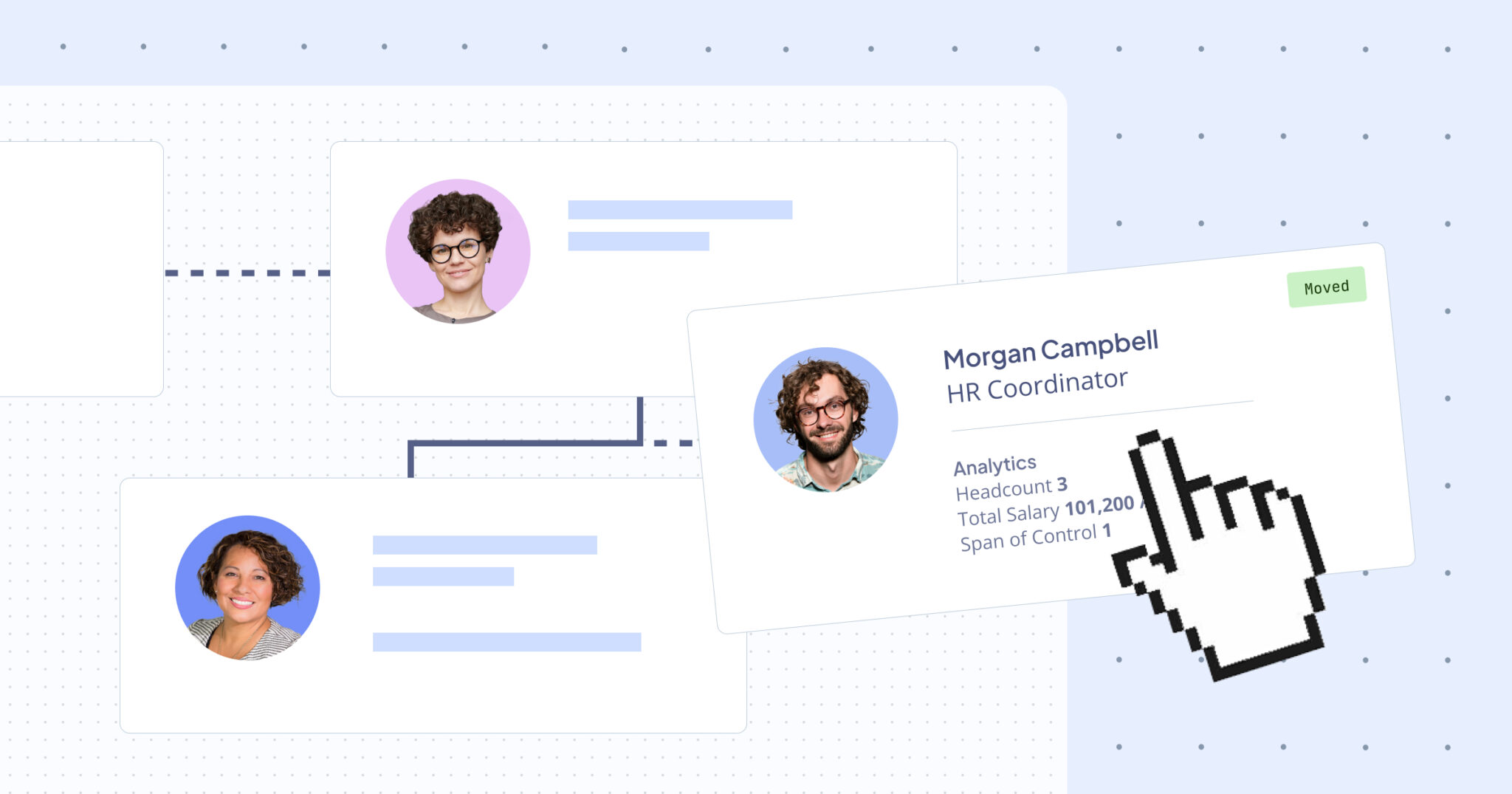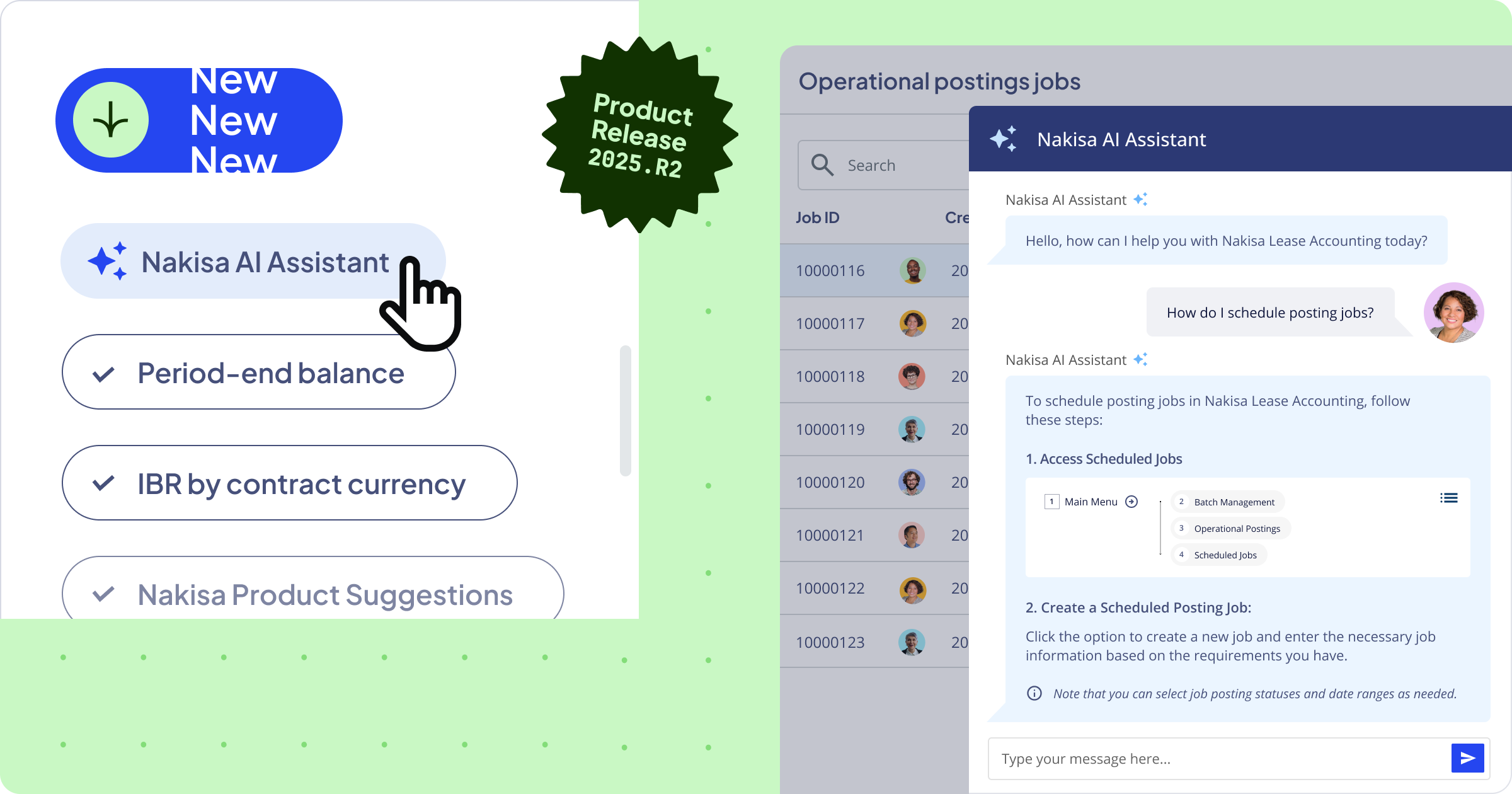In this guide, let’s discuss Common Area Maintenance (CAM) and the importance of CAM reconciliation for real estate professionals. This guide also highlights the importance of components available in CAM.
- What are Common Area Maintenance (CAM) charges?
- What is CAM reconciliation in real estate?
- Why are CAM charges and reconciliation important?
- How do the lease accounting standards IFRS 16 and ASC 842 affect CAM reconciliation?
- Key components involved in CAM reconciliation
- Best practices to prevent CAM charge disputes
- Best CAM reconciliation practices for global retailers
- How can Nakisa Real Estate (NRE) help with CAM charges?
What are Common Area Maintenance (CAM) charges?
The acronym CAM stands for Common Area Maintenance and is widely used in property management, commercial real estate, and lease management. CAM charges include the fees tenants should pay to landlords for upkeeping common area spaces such as lobbies, elevators, stairways, hallways, restrooms, parking lots, and other shared facilities.
Every lease agreement outlines specific terms for these expenses, but typically, CAM expenses are based on the lessee's pro-rata share. This metric is calculated by dividing the square footage occupied by the tenant by the total square footage of the building and is usually specified in the lease agreement. The pro-rata share principle ensures a fair distribution of expenses among tenants. For instance, in a shopping center, the retailer with the largest store space bears a higher proportion of the expenses related to security, landscaping, cleaning, parking lots, and maintenance of the common areas.
There are two types of CAM charges: controllable and uncontrollable. Controllable CAM charges are relatively predictable and can be effectively planned for, whereas uncontrollable CAM charges may fluctuate significantly from year to year and can be unforeseen.
| Controllable CAM charges | Uncontrollable CAM charges |
| Garage expenses | Unforeseen damages |
| Repairs and maintenance | Additional cleaning requirements |
| Security | Gas |
| Administration salaries | Water |
| Landscaping | Electricity |
| Improvements | Building & HVAC maintenance |
| Etc. | Trash & Snow Removal |
| Etc. |
Property managers and tenants need to be aware of both controllable and uncontrollable CAM charges to effectively plan and manage their budgets.
What is CAM reconciliation in real estate?
In real estate, CAM Reconciliation is a crucial process that addresses the estimation and assessment of shared expenses between landlords and tenants.
Landlords typically estimate CAM charges using historical data and divide them into monthly payments. Despite efforts to achieve accuracy, the unpredictable nature of CAM costs we discussed above often leads to disparities between the actual expenses incurred and the payments made by tenants.
The primary purpose of CAM reconciliation is to evaluate the accuracy of the estimated escrow charges paid by tenants throughout the lease term. During this process, landlords provide a detailed breakdown of shared expenses. As a result of the reconciliation, there may be instances where tenants are due reimbursements for overpaid amounts. Conversely, tenants may also be responsible for paying any outstanding differences if the actual expenses exceed the estimated charges.
The timing of CAM reconciliations depends on the lease terms and agreements, with due dates typically falling within 30 to 90 days after December 31st (that’s why the term “year-end CAM reconciliation” is widely used). Upon receiving the reconciliation statement, tenants have the option to perform a lease audit to verify the accuracy of the charges and to prevent potential overcharges.
Why are CAM charges and reconciliation important?
By conducting CAM reconciliation, both landlords and tenants can ensure transparency and fairness in sharing the costs associated with maintaining and managing common areas. The process ensures that both landlords and tenants have a clear understanding of the costs incurred and how they are allocated among tenants. This in turn leads to a more balanced and equitable approach to handling shared expenses and contributes to a mutually beneficial landlord-tenant relationship.
For landlords, year-end CAM reconciliation is a critical tool to ensure they recover all the expenses paid throughout the year from their tenants. In cases where the estimated expenses fall short of the actual CAM expenses, landlords may have spent more than they are collecting from their tenants. CAM reconciliation provides an opportunity for landlords to recoup these costs and maintain a financially sustainable property.
Tenants also benefit from CAM reconciliation. If their monthly payments have been higher than the actual CAM expenses or if expenses that should be excluded or capped have been included, tenants are entitled to receive CAM reimbursement. The detailed breakdown of costs provided during CAM reconciliation enables tenants to verify that they are paying their fair share and can lead to potential refunds when overpayment occurs. CAM reconciliation can serve as a starting point for tenants who wish to perform a CAM audit.
In commercial real estate, year-end CAM reconciliation ensures cost management, financial transparency, and compliance with lease agreements. It helps prevent disputes, enables efficient budgeting, and identifies cost-saving opportunities across multiple properties, fostering better financial planning and decision-making for global enterprises and retailers.
How do the lease accounting standards IFRS 16 and ASC 842 affect CAM reconciliation?
Navigating CAM charges within IFRS 16 and ASC 842 accounting standards adds complexity to lease accounting and financial reporting. The challenge lies in understanding when and how to recognize CAM charges, which depends on your accounting policy and lease type.
In triple net leases, CAM charges, taxes, and insurance are consolidated into a fixed monthly payment. Here, CAM charges contribute to the minimal lease payment, impacting the calculation of the right-of-use (ROU) asset under IFRS 16 and ASC 842. This inclusion increases lease liability and the ROU asset on the balance sheet, potentially leading to a front-loading of expenses in finance leases.
However, the unpredictability inherent in CAM charges means that even within triple net leases, landlords may invoice additional charges at year-end. These supplementary amounts don't increase the ROU asset; instead, they need to be recognized as expenses on the income statement during the respective period.
Conversely, in a gross lease scenario, where base rent, CAM charges, and taxes are billed separately, CAM charges don’t impact the ROU asset and don’t affect your IFRS 16 nor ASC 842 compliance. Your company just needs to state CAM as a non-lease component and recognize CAM charges on the income statement.
Key components involved in CAM reconciliation
Commercial real estate lease agreements can vary in terms. Here, we gathered the main and most typical components to consider during the CAM reconciliation process:
- General ledger review
The reconciliation process begins with a meticulous review of the general ledger. Landlords scrutinize each transaction and invoice, verifying that they are correctly assigned to the appropriate accounts and buildings. This step forms the foundation of the reconciliation process, ensuring that all financial records are accurate.
- Pro-rata shares
Pro-rata shares are calculated to determine each tenant's share of the common expenses. This calculation is based on the percentage of square footage allocated to each tenant in the property. Accurate pro-rata shares are essential to ensure that tenants contribute their fair share of expenses relative to the space they occupy.
Landlords have several methods for calculating pro-rata shares. For instance, they may include or exclude walls, and distinguish between various types of space. It’s crucial to understand how the pro-rata share is being calculated and to confirm that it’s being done equitably and accurately for all tenants.
- Gross-ups
When a building isn't fully leased, landlords often use a "gross-up" calculation. This ensures that common area maintenance (CAM) expenses are adjusted as though the building were fully occupied. The primary goal of this adjustment is to distribute expenses equitably, especially when vacancies might otherwise skew shared costs. For instance, if there is only one tenant that occupies 35% of the building, it wouldn't be fair to charge them for just 35% of water and electricity consumption and other CAM charges. After all, they would be the sole consumer of these utilities with no other tenants to share the costs.
It's important to highlight that while gross-ups are prevalent in corporate real estate and office leases, they're seldom seen in retail or industrial leases.
- Exclusions
Some lease agreements explicitly exclude certain expenses from being charged to tenants as part of CAM. However, even in cases where the lease does not explicitly exclude expenses, tenants may negotiate their exclusion if it is warranted. For example, tenants should not be charged for expenses they have already reimbursed through other means, nor for expenses they directly pay to vendors or utility providers.
- Proration for recent transactions
When a store or warehouse is relocated to a new place during the year, their CAM expenses should be prorated according to the duration of the occupancy, rather than being calculated for the entire year. This proration also applies to co-tenants who have started or finished their lease during the year, as it affects the pro-rata share and payment amounts.
- Expansions, contradictions, and moves
If there are changes in the size of a tenant's space (e.g., store expansion) or relocation within the same building, it may lead to multiple reconciliations for the same year—one before the change and another after it. This ensures that year-end CAM expenses are accurately allocated for each specific period.
- Expense limits
Lease agreements may impose caps on certain types of expenses, especially for controllable expenses like marketing, advertising, labor, or supplies. These expense limits define the maximum level of cost increase that tenants are accountable for, and any amount exceeding the limit becomes the responsibility of the landlord.
Effortlessly automate CAM reconciliation with Nakisa Real Estate software. Our software ensures accuracy by considering all key components
Best practices to prevent CAM charge disputes
To avoid potential conflicts with your landlord over Common Area Maintenance (CAM) charges, it's essential to proactively take measures. Since disputes regarding such charges can lead to time-consuming and costly conflicts, consider implementing the following best practices:
- Carefully review lease agreements. Become familiar with the specific CAM charges outlined, as well as your responsibilities related to them. Understanding these terms from the outset can help prevent misunderstandings later.
- Request detailed CAM charge breakdown or CAM report. This breakdown will help you better understand the charges and assess their fairness.
- Maintain regular communication with the landlord. Foster open communication with your landlord to discuss any concerns or questions you may have regarding the CAM charges. A proactive approach to communication can help resolve potential issues before they escalate into disputes.
- Keep detailed payment records. Save records and receipts of all payments related to CAM charges. Having organized documentation will serve as evidence of your payments for possible CAM reimbursement.
- Address issues promptly and professionally. If you encounter any issues or discrepancies related to CAM charges, avoid delaying discussions, as the timely resolution can prevent conflicts from escalating.
- Seek mediation if needed. If disagreements persist, consider mediation to facilitate a fair and impartial resolution. A mediator can help both parties come to an agreement and prevent disputes from turning into prolonged legal battles.
Best CAM reconciliation practices for global retailers
As we mentioned above, CAM reconciliation enables global companies to identify cost-saving opportunities across multiple properties and foster more efficient budget planning and decision-making. However, tracking CAM expenses and ensuring its transparency and accuracy in multiple properties under multiple causes can be challenging. Here are the best practices for real estate teams and property managers to consider:
- Centralized data management. Establish a centralized system for managing CAM data, ensuring that all relevant information from different locations is organized and accessible. Utilize digital platforms or software solutions that facilitate real-time data updates and collaboration among global teams.
- Standardized CAM reporting format across all locations. This consistency will streamline data collection, analysis, and comparisons, making it easier to identify trends and discrepancies. Clearly define CAM expense categories to avoid ambiguity and ensure accurate allocation. Categories may include maintenance, security, cleaning, utilities, landscaping, and other shared services.
- Regular review, updates, and verification. Conduct regular reviews of CAM reports to verify accuracy and compliance. Add all records and receipts of payments related to CAM charges to get CAM reimbursement when applicable. Establish a review schedule that aligns with lease agreements and financial reporting periods.
- Compliance with lease agreements. Ensure that CAM reports align with the terms and conditions outlined in lease agreements. Adherence to contractual obligations is crucial for maintaining positive relationships with landlords.
- Budgeting and forecasting. Incorporate CAM expenses into your budgeting and forecasting processes. Anticipate potential fluctuations and plan for contingencies to ensure financial stability across global retail operations.
- Local expertise and regional oversight. Involve local experts and regional managers in the CAM reporting process. They can provide insights into regional regulations and their changes, market variances, and specific CAM requirements for each location.
- Utilize technology and CAM automation. Reconciliation automation will streamline complex CAM reporting processes, reduce manual errors, and enhance overall efficiency. Commercial real estate software can help consolidate data, generate reports, and improve data accuracy.
By taking these steps, global retailers can not only empower property management operations but also reduce their expenses, have a more complete overview of their commercial real estate portfolio, and achieve better budgeting and forecasting.
Don’t know what software to choose to streamline your commercial real estate operations? Check out our Buyer’s Guide with RFP Checklist & Feature Template!
How can Nakisa Real Estate (NRE) help with CAM charges?
Nakisa provides enterprises with top-notch software for real estate and lease management. Nakisa Real Estate (NRE) is a one-stop shop for property managers and lease administrators to get a complete overview of locations (buildings), premises (store or office units), and lease contracts. Perfect for managing owned, leased, and sub-leased assets, NRE centralizes all lease-related data in one place, automates processes, ensures lease compliance, and enables cross-team collaboration.
You can easily upload the landlord invoices (typically received at the end of the year) into the Nakisa Real Estate software. This allows for an automatic population of CAM charges year by year. Then, reconcile and track the accrual of expenses against the total costs that should have been paid based on the lease conditions abstracted at the inception of the lease like pro-rate share, expense caps and limits, and more. Nakisa functionalities simplify the management of numerous leases, making it easy to identify discrepancies in CAM charges and dispute year-end vendor invoices. We also provide users with batch and mass operations, automated percentage rent calculations, budgeting and forecasting functionality, and more.
Want to discover hidden opportunities in CAM reconciliation and optimize real estate operations?





